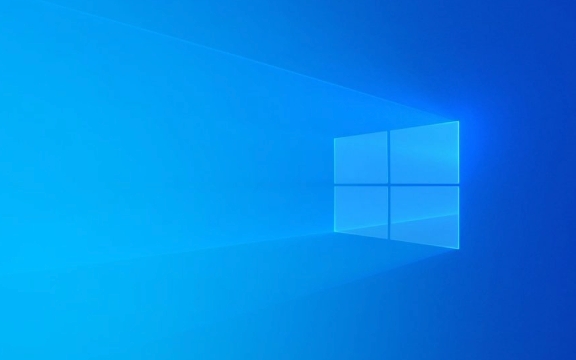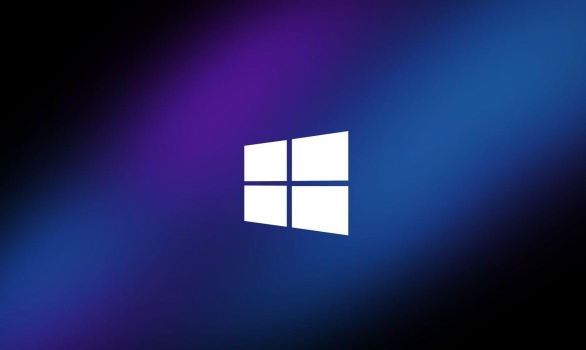Open Settings via Windows I, go to System > Notifications to manage app-specific alerts by toggling "Show notifications" off for selected apps. 2. Use Focus Assist in the same menu to silence distractions with three modes—Off, Priority only, or Alarms only—and set automatic rules based on time, activity, or battery use. 3. Adjust banner visibility and sounds by toggling off "Show notification banners" and "Play sounds," and hide the notification center button if unwanted. 4. Clear past notifications from the Notification Center by dismissing them individually or clicking "Clear all," knowing Windows automatically removes old alerts after a few days. Managing notifications in Windows 11 is straightforward through centralized settings that let you customize alerts, minimize interruptions, and maintain focus according to your preferences.

Managing notifications in Windows 11 is simple once you know where to look. The system gives you fine control over which apps can send alerts, how they appear, and when to silence them—especially useful if you're trying to stay focused. Here’s how to take charge of your notifications.

1. Turn Notifications On or Off for Specific Apps
You can choose exactly which apps are allowed to notify you.
- Press Windows I to open Settings.
- Go to System > Notifications.
- Scroll down to "Notifications from apps and other senders".
- Click on any app to customize its notification behavior:
- Toggle "Show notifications" off to block all alerts from that app.
- Adjust options like sound, banners, or whether it shows on the lock screen.
This is helpful for silencing noisy apps like Mail or Calendar during work hours, or muting games and social media.

2. Use Focus Assist to Minimize Distractions
Focus Assist (similar to Do Not Disturb) lets you silence notifications during specific times or activities.
- In Settings > System > Focus assist, you’ll see three modes:
- Off: All notifications come through.
- Priority only: Only selected apps and people can notify you.
- Alarms only: Only alarms will break through.
You can set rules, like turning Focus Assist on automatically when you’re duplicating your display, during certain hours, or when using battery power. Under "Customize your priority experience", you can define who and what counts as priority.

3. Control Notification Banners and Sounds
If you still want alerts but find them too intrusive, tweak how they appear and sound.
Back in Settings > System > Notifications:
- Toggle "Show notification banners" if you don’t want pop-ups to appear briefly.
- Turn off "Play sounds" for a quieter experience.
- Disable "Show the notification center button" on the taskbar if you rarely use it.
You can also manage quick actions in the notification center (like Wi-Fi or Bluetooth toggles) by right-clicking the taskbar > Taskbar settings > Taskbar items.
4. Clear and Manage Past Notifications
Notifications pile up in the Notification Center (the chat bubble icon on the far-right of the taskbar).
- Click the icon to view recent alerts.
- Hover over any notification and click the X to dismiss it individually.
- Click "Clear all" at the top to remove everything.
- Note: Windows clears old notifications automatically after a few days.
Basically, Windows 11 gives you solid control—whether you want total silence, selective alerts, or just a cleaner look. The key is visiting Settings > System > Notifications and adjusting app permissions and Focus Assist to match your workflow. Not complicated, but easy to overlook.
The above is the detailed content of How to manage notifications in Windows 11. For more information, please follow other related articles on the PHP Chinese website!

Hot AI Tools

Undress AI Tool
Undress images for free

Undresser.AI Undress
AI-powered app for creating realistic nude photos

AI Clothes Remover
Online AI tool for removing clothes from photos.

Clothoff.io
AI clothes remover

Video Face Swap
Swap faces in any video effortlessly with our completely free AI face swap tool!

Hot Article

Hot Tools

Notepad++7.3.1
Easy-to-use and free code editor

SublimeText3 Chinese version
Chinese version, very easy to use

Zend Studio 13.0.1
Powerful PHP integrated development environment

Dreamweaver CS6
Visual web development tools

SublimeText3 Mac version
God-level code editing software (SublimeText3)
 How to Change Font Color on Desktop Icons (Windows 11)
Jul 07, 2025 pm 12:07 PM
How to Change Font Color on Desktop Icons (Windows 11)
Jul 07, 2025 pm 12:07 PM
If you're having trouble reading your desktop icons' text or simply want to personalize your desktop look, you may be looking for a way to change the font color on desktop icons in Windows 11. Unfortunately, Windows 11 doesn't offer an easy built-in
 Fixed Windows 11 Google Chrome not opening
Jul 08, 2025 pm 02:36 PM
Fixed Windows 11 Google Chrome not opening
Jul 08, 2025 pm 02:36 PM
Fixed Windows 11 Google Chrome not opening Google Chrome is the most popular browser right now, but even it sometimes requires help to open on Windows. Then follow the on-screen instructions to complete the process. After completing the above steps, launch Google Chrome again to see if it works properly now. 5. Delete Chrome User Profile If you are still having problems, it may be time to delete Chrome User Profile. This will delete all your personal information, so be sure to back up all relevant data. Typically, you delete the Chrome user profile through the browser itself. But given that you can't open it, here's another way: Turn on Windo
 How to fix second monitor not detected in Windows?
Jul 12, 2025 am 02:27 AM
How to fix second monitor not detected in Windows?
Jul 12, 2025 am 02:27 AM
When Windows cannot detect a second monitor, first check whether the physical connection is normal, including power supply, cable plug-in and interface compatibility, and try to replace the cable or adapter; secondly, update or reinstall the graphics card driver through the Device Manager, and roll back the driver version if necessary; then manually click "Detection" in the display settings to identify the monitor to confirm whether it is correctly identified by the system; finally check whether the monitor input source is switched to the corresponding interface, and confirm whether the graphics card output port connected to the cable is correct. Following the above steps to check in turn, most dual-screen recognition problems can usually be solved.
 Want to Build an Everyday Work Desktop? Get a Mini PC Instead
Jul 08, 2025 am 06:03 AM
Want to Build an Everyday Work Desktop? Get a Mini PC Instead
Jul 08, 2025 am 06:03 AM
Mini PCs have undergone
 Fixed the failure to upload files in Windows Google Chrome
Jul 08, 2025 pm 02:33 PM
Fixed the failure to upload files in Windows Google Chrome
Jul 08, 2025 pm 02:33 PM
Have problems uploading files in Google Chrome? This may be annoying, right? Whether you are attaching documents to emails, sharing images on social media, or submitting important files for work or school, a smooth file upload process is crucial. So, it can be frustrating if your file uploads continue to fail in Chrome on Windows PC. If you're not ready to give up your favorite browser, here are some tips for fixes that can't upload files on Windows Google Chrome 1. Start with Universal Repair Before we learn about any advanced troubleshooting tips, it's best to try some of the basic solutions mentioned below. Troubleshooting Internet connection issues: Internet connection
 How to clear the print queue in Windows?
Jul 11, 2025 am 02:19 AM
How to clear the print queue in Windows?
Jul 11, 2025 am 02:19 AM
When encountering the problem of printing task stuck, clearing the print queue and restarting the PrintSpooler service is an effective solution. First, open the "Device and Printer" interface to find the corresponding printer, right-click the task and select "Cancel" to clear a single task, or click "Cancel all documents" to clear the queue at one time; if the queue is inaccessible, press Win R to enter services.msc to open the service list, find "PrintSpooler" and stop it before starting the service. If necessary, you can manually delete the residual files under the C:\Windows\System32\spool\PRINTERS path to completely solve the problem.
 How to run Command Prompt as an administrator in Windows 10?
Jul 05, 2025 am 02:31 AM
How to run Command Prompt as an administrator in Windows 10?
Jul 05, 2025 am 02:31 AM
To run command prompts as administrator, the most direct way is to search through the Start menu and right-click "Run as administrator"; secondly, use the Win X shortcut menu to select "Command Prompt (Administrator)" or "Windows Terminal (Administrator)"; you can also open the run window through Win R and enter cmd and press Ctrl Shift Enter to force running as administrator; in addition, you can set shortcut properties to achieve automatic running as administrator. All the above methods require administrator permission and confirmation through UAC. Pay attention to security risks during operation.







